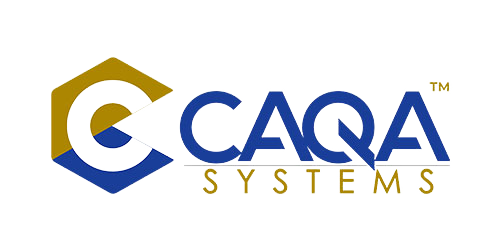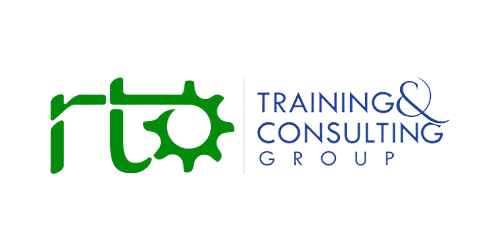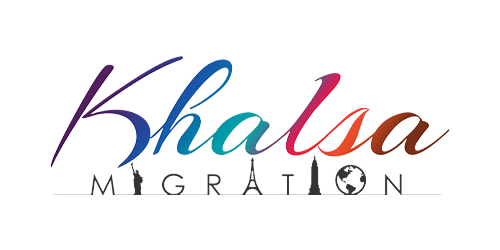Australia's $51 Billion VET Industry Sets International Standards Through Industry Partnerships and Qualification Framework
By CAQA Education Correspondents
Australia's Vocational Education and Training (VET) sector has established itself as a global leader in skills development, creating a model that countries worldwide seek to emulate. With more than 4 million students enrolled annually across approximately 4,000 Registered Training Organisations (RTOs), Australia's VET system combines robust national standards, strong industry engagement, and innovative delivery methods to produce job-ready graduates. Despite facing regulatory challenges, the sector continues to maintain its international standing through a comprehensive framework that balances quality assurance with flexibility and responsiveness to industry needs.
THE SCALE AND STRUCTURE: AUSTRALIA'S COMPREHENSIVE VET ECOSYSTEM
The Australian VET sector operates as a nationally unified yet locally responsive network delivering practical, competency-based training across virtually all industries. In 2022, total VET participation reached approximately 4.5 million students, making it one of the primary avenues for Australians to upskill or reskill throughout their careers. The sector is supported by significant government investment, with over $10.7 billion in public funding allocated in 2022, an increase of 4.1% from the previous year.
At the core of this system are approximately 4,000 RTOs, including public Technical and Further Education (TAFE) institutes, private colleges, enterprise training units, community education centres, and some universities. As of 2023, there were 3,607 registered VET training organisations delivering training at 34,879 locations nationwide. This diverse provider landscape ensures training is accessible across metropolitan and regional areas, with 1,285 RTOs delivering nationally recognised, government-funded training and 1,481 providers offering a mix of government-funded and non-government-funded programs.
The Australian Qualifications Framework (AQF) provides a single, coherent structure for all qualifications from Certificate I through to Advanced Diplomas and Graduate Certificates. This framework ensures consistency in standards and enables clear pathways between different levels of education, with VET qualifications providing credit towards higher education degrees. This integrated approach has created a tertiary education system that facilitates lifelong learning and career mobility for students.
INDUSTRY ENGAGEMENT: THE CORNERSTONE OF AUSTRALIA'S VET SUCCESS
Australia's VET sector is distinguished by its deep integration with industry, ensuring that training remains relevant to actual workplace requirements. In 2023, 56.8% of Australian employers engaged with the VET system, with 66.4% expressing satisfaction with all forms of VET.
Industry input is embedded in curriculum development through Training Packages, which are sets of competency standards and qualifications developed by committees of industry experts and endorsed by the government. These packages, covering sectors from healthcare to engineering to retail, ensure that qualifications match workplace expectations across Australia. They undergo regular reviews and updates through industry consultation, keeping pace with technological changes and emerging skill requirements.
The apprenticeship and traineeship system further strengthens industry connections. As of June 2022, there were over 415,000 apprentices and trainees in training, representing a 21.6% increase from the previous year. This model combines on-the-job training with formal study, ensuring learning is embedded in real work contexts and that employers actively shape the skills of their future workforce. The effectiveness of this approach is evident in employment outcomes—over 90% of trade apprenticeship completers secure employment after finishing their training.
Industry also influences governance through formal channels such as Jobs and Skills Councils, which replaced earlier industry reference committees. These bodies give industry stakeholders a platform to shape training, product development and workforce planning in their sectors, ensuring the VET system remains demand-driven rather than supply-driven.
QUALITY ASSURANCE: MAINTAINING STANDARDS ACROSS THE SECTOR
Australia's international reputation for VET excellence is underpinned by a comprehensive quality assurance framework. The VET Quality Framework encompasses the Standards for RTOs, the Australian Qualifications Framework, accredited curriculum requirements, and regulatory oversight mechanisms.
The Australian Skills Quality Authority (ASQA) serves as the chief regulator for 90% of VET providers, responsible for registering and auditing RTOs, accrediting courses, and enforcing compliance. With a budget of $38.2 million in 2023-24 and approximately 220-226 staff, ASQA conducts regular audits and spot checks to verify that providers meet required standards. Victoria and Western Australia maintain their own regulatory authorities for some providers.
The Standards for RTOs outline obligations for training providers in areas such as competency-based training and assessment, industry engagement, student welfare, and compliance. These standards ensure that regardless of which RTO a student chooses, they receive quality training responsive to industry needs.
This multi-layered quality framework gives stakeholders confidence that Australia's VET qualifications and providers meet high standards. However, the system has faced challenges. A 2021 Australian National Audit Office report found that 60% of ASQA performance assessments lacked consistent evidence of non-compliance, with auditors applying varying interpretations rather than standardised criteria. In 2020, a Rapid Review of ASQA's practices found that 75% of providers audited between 2018 and 2020 were non-compliant with VET Quality Framework standards, yet only 15% faced immediate sanctions.
STUDENT OUTCOMES: DELIVERING REAL-WORLD RESULTS
The effectiveness of Australia's VET sector is demonstrated through consistently positive student outcomes. According to the 2024 Student Outcomes Survey conducted by the National Centre for Vocational Education Research (NCVER), 89.5% of students who completed a VET qualification reported satisfaction with their training experience.
Approximately 87% of graduates achieved their main reason for undertaking training, whether that was finding employment, gaining additional skills for current work, or progressing to higher studies. Around 64.4% of completers reported improved employment status after training, including unemployed students who found work and employed students who gained promotions, higher pay, or moved to higher-skilled roles post-training.
VET's role as a pathway to employment is particularly evident in apprenticeships, where over 90% of trade apprenticeship completers secure employment after completion. However, the system also supports further educational advancement, with 33.3% of VET completers continuing to further study.
From an employer's perspective, the system also delivers value. About 86% of employers are satisfied that vocational qualifications provide the skills required for their business, and around 85% of those who employ apprentices or trainees express satisfaction with the training their apprentices receive.
INTERNATIONAL ENGAGEMENT: EXPORTING AUSTRALIAN EXPERTISE
Australia's VET sector has leveraged its expertise to become a significant player in the global education market. By 2018, VET had grown to become Australia's second-largest international education sector, behind only universities. That year, more than 244,000 overseas students enrolled in Australian VET programs, accounting for approximately 28% of all onshore international students and contributing about A$6.3 billion in export earnings.
International student satisfaction remains high, with 84.5% of international VET graduates reporting satisfaction with the quality of their Australian training, and over half noting improved employment status after training. This has helped establish Australia as a preferred destination for vocational education, competing effectively with countries like Canada and the United Kingdom.
Australia's VET system is also frequently referenced as a model for other countries developing their own vocational education frameworks. Australian experts advise on VET system development overseas, particularly in the Asia-Pacific region, sharing best practices in competency-based training, qualification frameworks, and industry-led course design.
INNOVATION AND ADAPTATION: PREPARING FOR FUTURE CHALLENGES
To maintain its leadership position, Australia's VET sector continues to evolve in response to changing workforce needs. Recent innovations include the development of specialised TAFE Centres of Excellence focused on high-growth and high-tech industries such as renewable energy, advanced manufacturing, marine science, and cybersecurity. Private registered training organisations should also benefit from these initiatives.
A major VET qualifications reform is also underway, moving towards a more flexible, "purpose-based" qualification design that allows faster updates and more adaptable qualifications tailored to broader industry needs. By 2026, the first of these reformed qualifications is expected to be available.
Technology-enhanced learning has become increasingly important, with Australian RTOs adopting online platforms, simulation software, and virtual reality training tools to complement practical training. The pandemic accelerated digital delivery adoption, with blended learning now common across the sector. According to sector surveys, nearly half of RTOs have developed digital transformation plans, and approximately 72% of VET courses now incorporate some form of online or blended learning, higher than Canada (30%) and the UK (25%).
The sector's alignment with future workforce needs is further strengthened through the Jobs and Skills Australia agency, which provides data analysis and forecasts on emerging skills requirements to inform VET planning. The QS World Future Skills Index 2025 ranked Australia as a global frontrunner in preparing students for the future of work, citing strong alignment between skills training and industry demand in areas like digital literacy, AI, and green technology.
CHALLENGES AND OPPORTUNITIES: NAVIGATING A COMPLEX LANDSCAPE
Despite its strengths, Australia's VET sector faces significant challenges. Inconsistent regulatory oversight has led to variable quality outcomes, with a large number of RTOs surveyed in 2024 reporting unfair treatment due to auditor variability. The recent cancellation of over 21,000 qualifications from providers like Luvium, IIET, and others highlights ongoing quality concerns in parts of the sector.
Resource constraints also impact regulatory effectiveness. ASQA's budget of $65.986 million and over 200 staff, with a departmental appropriation of $47.117 million, is stretched thin monitoring approximately 4,000 RTOs, resulting in a backlog of 1,200 complaints as of June 2024. This compares unfavourably to the UK's Ofsted, which has a significantly larger budget for fewer providers.
International competition presents both opportunities and threats. While Australia captured a majority of the global VET market in recent years, countries like Canada and the UK are intensifying efforts to attract international students. Canada's 250,000 enrollments and the UK's £50 million investment in apprenticeships in 2023 directly challenge Australia's position.
Skills shortages in critical areas present both challenges and opportunities. Australia needs an additional 83,000 trade workers to meet its housing targets, creating demand for qualified trainers and programs. However, the aging trainer workforce (average age 52 in 2023) and regulatory challenges complicate efforts to expand capacity.
CONCLUSION: SUSTAINING EXCELLENCE THROUGH BALANCE
Australia's VET sector maintains its global leadership through a powerful combination of national standards, industry relevance, and adaptability. The system's success is evident in high satisfaction rates among students and employers, strong employment outcomes for graduates, and international recognition of Australian qualifications.
Looking forward, the sector's continued excellence depends on addressing regulatory inconsistencies while preserving the flexibility that allows RTOs to respond to emerging workforce needs. By strengthening quality assurance without stifling innovation, expanding international partnerships while maintaining domestic focus, and embracing technological change while preserving hands-on skill development, Australia's VET sector is well-positioned to remain a global benchmark for vocational education and training.
As countries worldwide grapple with skills shortages and rapid technological change, Australia's VET model offers valuable lessons in building education systems that effectively bridge the gap between learning and work. Through continued evolution and commitment to quality, Australia's $51 billion VET sector stands ready to meet the challenges of an increasingly complex global economy.


































